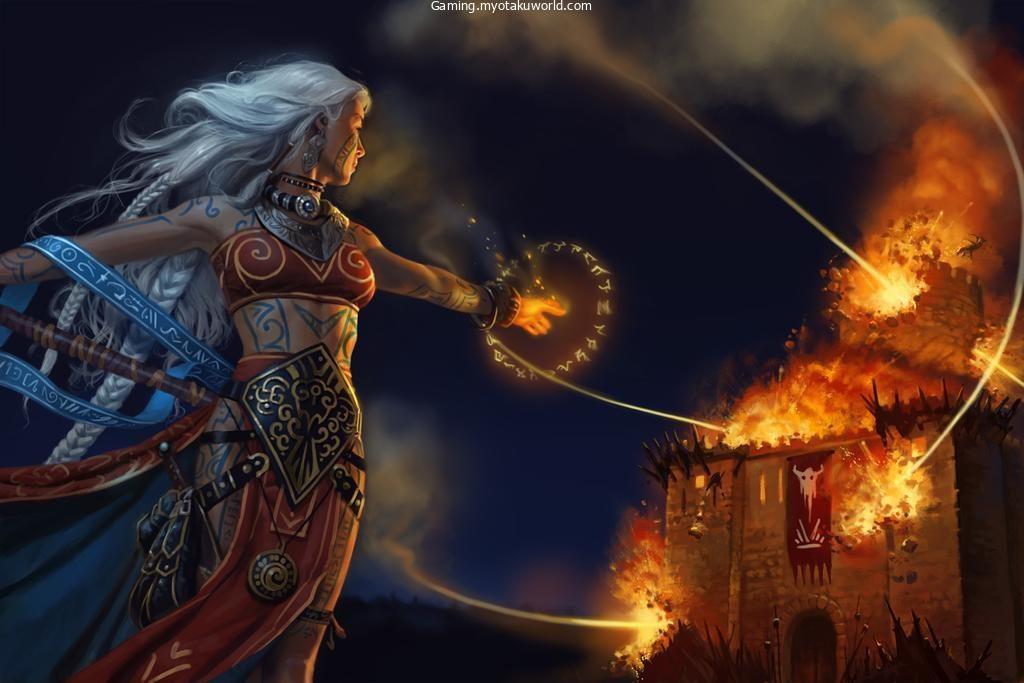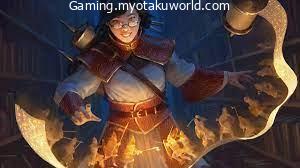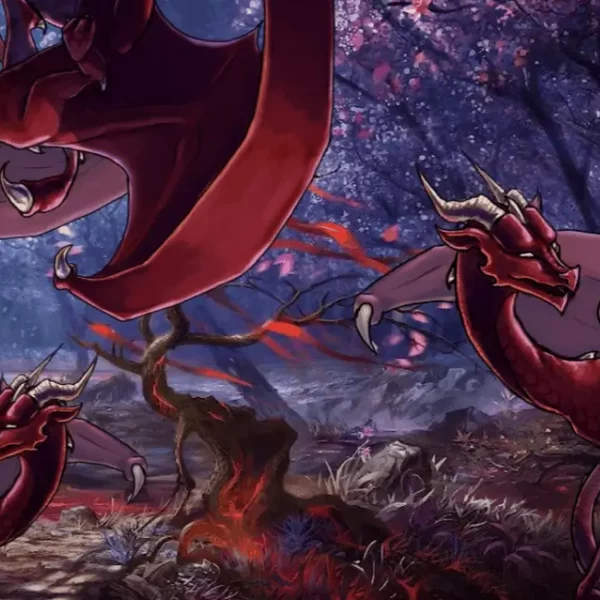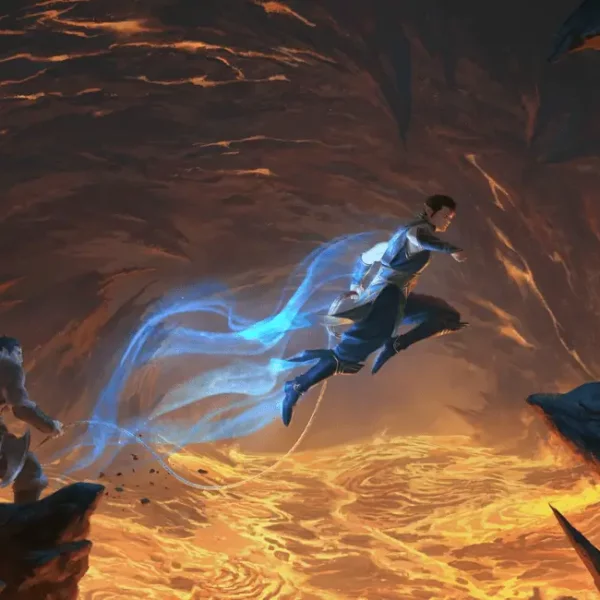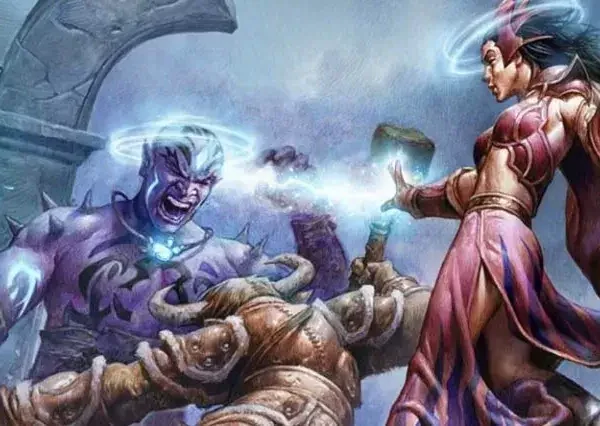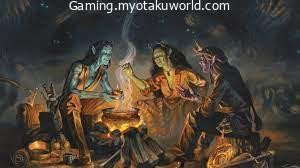Wizards are experts in the field of magic & Wizard Spells, who pounce on the strings of arcane by a constant effort to research and practice.
The outcome of their thirst for knowledge is that they can mind control, create Planar beings, shoot fires and use other magical techniques which benefit them and spells make the definition of a wizard.
They learn about spells through experiments by other wizards, old books, or even ancient creatures by keeping them within the books of spells.
Contrary to Bards or Sorcerers, Wizards have a large selection of spells that are available to the class provided they have slots to cast them.
Wizards must prepare their spells in advance which requires vision.
This is the reason they’re considered “the Swiss Army Knife” of D&D: they are able to prepare for any scenario.
I have tried to emphasize practicality and flexibility on this list, along with several powerful spells.
Enjoy!
NOTE: I arranged this list according to the strength of the spells, as well.
Always have a damage trip ready to increase your damage.
25. Earthbind
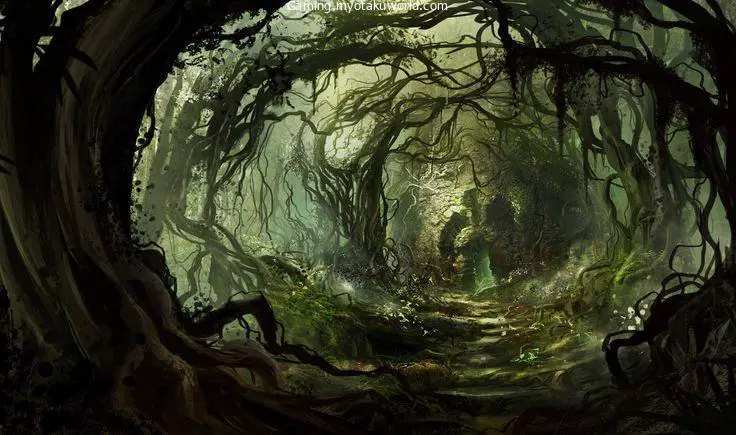
Source: Xanathar’s Guide to Everything
2nd-level transmutation
Casting Time: 1 action
Range: 300 feet
Components: V
Duration: Concentration, up to 1 minute
Choose one creature you can see within range. Yellow strips of magical energy loop around the creature.
The target must succeed on a Strength saving throw or its flying speed (if any) is reduced to 0 feet for the spell’s duration.
An airborne creature affected by this spell descends at 60 feet per round until it reaches the ground or the spell ends.
24. Blur

Source: Player’s Handbook
2nd-level illusion
Casting Time: 1 action
Range: Self
Components: V
Duration: Concentration, up to 1 minute
Your body becomes blurred, shifting and wavering to all who can see you. For the duration, any creature has disadvantage on attack rolls against you.
An attacker is immune to this effect if it doesn’t rely on sight, as with blindsight, or can see through illusions, as with truesight.
23. Chill Touch

Source: Player’s Handbook
Necromancy cantrip
Casting Time: 1 action
Range: 120 feet
Components: V, S
Duration: 1 round
You create a ghostly, skeletal hand in the space of a creature within range. Make a ranged spell attack against the creature to assail it with the chill of the grave.
On a hit, the target takes 1d8 necrotic damage, and it can’t regain hit points until the start of your next turn.
Until then, the hand clings to the target. If you hit an undead target, it also has disadvantage on attack rolls against you until the end of your next turn.
At Higher Levels. This spell’s damage increases by 1d8 when you reach 5th level (2d8), 11th level (3d8), and 17th level (4d8).
22. Blade Ward

Source: Player’s Handbook
Abjuration cantrip
Casting Time: 1 action
Range: Self
Components: V, S
Duration: 1 round
You extend your hand and trace a sigil of warding in the air. Until the end of your next turn, you have resistance against bludgeoning, piercing, and slashing damage dealt by weapon attacks.
21. Acid Splash
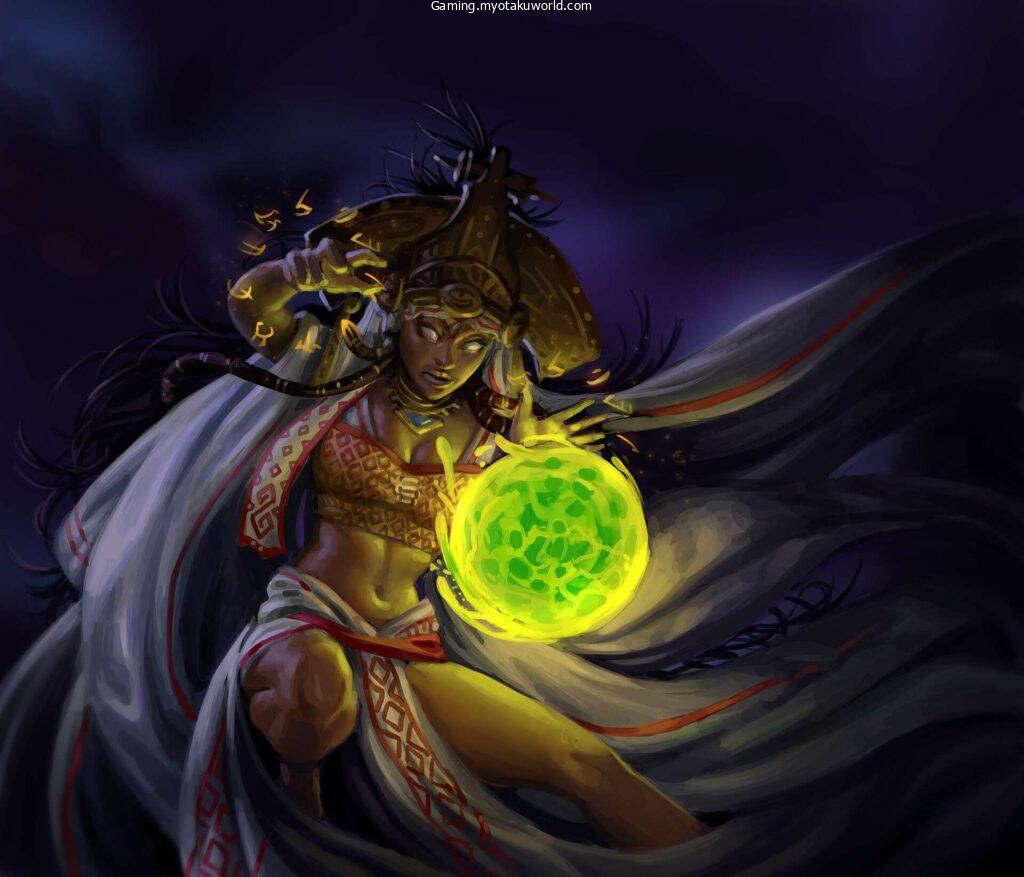
Source: Player’s Handbook
Conjuration cantrip
Casting Time: 1 action
Range: 60 feet
Components: V, S
Duration: Instantaneous
You hurl a bubble of acid. Choose one creature you can see within range, or choose two creatures you can see within range that are within 5 feet of each other.
A target must succeed on a Dexterity saving throw or take 1d6 acid damage.
At Higher Levels. This spell’s damage increases by 1d6 when you reach 5th level (2d6), 11th level (3d6), and 17th level (4d6).
20. Prestidigitation

Source: Player’s Handbook
Prestidigitation is a common cantrip among spellcasters.
The cantrip can be used to create harmless sensory effects, such as music notes, sparks, or a strange odor.
It is also able to create or ignite a small flame, clean or dirt an object, alter temperature, alter flavors or even create a tiny trinket that you can carry inside your hand.
This means you can warm your bed at any time.
Also, you can play music while on the move.
Perhaps you can make loud noises to deter a guard or create a poisonous taste and smell.
There’s nothing Prestidigitation could not do with a bit of imagination.
19. Find Familiar

Source: Player’s Handbook
As a spell of the 1st level Find Familiar can be used in later campaigns.
It lets you create an arcane creature (Fey, Fiend, or Celestial) and it assists you like an animal.
You and your friend share the ability to communicate.
Therefore, as the person you are with isn’t too far away, you’ll be able to look into its eyes and listen to its ears.
By bringing your senses into your personal space, you develop your senses similar to the blindsight of bats or an Owl’s dark vision.
It is possible to transform your favorite into a raven, to send messages, or even an octopus in order to retrieve the treasure deep under the water.
18. Mage Armor

Source: Player’s Handbook
A well-known spell that is on the 1st level list of spells, Mage Armor protects a willing target who is not armored by surrounding them with a powerful force, transforming their AC base up to 13, plus a Dexterity Modifier.
The duration of the Mage Armor spell is eight hours.
The spell is over when the target is able to put on the armor.
They can however still wear shields when under the spell’s influence.
This spell can be useful in situations where you’re confronted with a threat and aren’t able to prepare.
It can also be used to shield the less able members of your group, for example, the barbarian that will not fight naked.
17. Shield

Source: Player’s Handbook
The Shield is an amazing first-level magic spell that makes an amazing shield that protects you.
It’s a reaction and you’re able to decide whether or not to apply it after an opponent makes an attack roll on you.
The effect lasts until your next turn.
It grants you +5 AC, which can be awe-inspiring to opponents when they believe you are an easy target.
Make sure you note that the choice to make use of your Shield spell should be taken before the DM rolls to determine the damage.
The shield is a lifesaver by forcing enemies to take on your high AC.
It can also make you invulnerable to magical missiles.
This is what makes Shield particularly beneficial when you need to hold a spell that demands concentration.
16. Invisibility

Source: Player’s Handbook
The 2nd level spell is really enjoyable and your rogue will always be grateful for the no-cost sneak attacks.
Invisibility is as simple as it sounds.
It makes the object invisible when you touch it.
This spell is perfect for sneaking in and out of places at any time of the day.
Note that you will still be heard even if you’re invisible so be aware of that!
15. Fly

Source: Player’s Handbook
Fly is a fantastic utility spell.
It’s a spell of 3rd level that lets your wizard select a creature willing to cooperate and gives them the ability to travel for 10 hours.
Fly forces you to view and feel the terrain in three dimensions.
This allows you to avoid difficult enemies and allow your fighter to fight flying opponents.
It’s possible to be exposed to projectiles but it’s more effective than a sharp Axe to the face.
If the barbarian in your group believes they’re terrifying then wait until you throw a fly over them.
A barbarian who is rushing toward an opponent with a speed of 60 feet per round from the air is terrifying!
14. Counterspell

Source: Player’s Handbook
Every Veteran Wizard knows at least one instance that describes how Counterspell prevented their party from complete disaster.
The 3rd level spell isn’t as impressive as the others.
It can nevertheless turn the outcome of a dangerous encounter into an occasional annoyance.
Counterspell allows you to stop the casting of spells by a creature in response.
If you Counterspell a Level 3 or lower, the spell is not effective.
If you counterspell a Level four or higher spell, you need to avoid the spell’s DC using a spellcasting capability to make sure it is not interrupted.
13. Fireball

Source: Player’s Handbook
If the Wizard could choose just the one magical spell they could choose, I would say Fireball is probably it.
Fireball is a third-level spell that has been a staple of D&D for as long as it’s been in existence.
Your finger is pointed towards a direction, and you create an explosion of 20 feet.
All creatures in the area of impact must make a Dexterity save attempt or suffer total damage.
Although the ability to resist fire is part of many creatures in D&D, the damage that can be produced (and range) by Fireball almost surpasses it.
And of course, the explosions are simply awesome.
12. Haste

Source: Player’s Handbook
Haste is generally beneficial to all the others.
However, it is still extremely valuable.
Haste is a third-level spell that increases the speed at which creatures move and grants them a bonus of 2 AC and gives the creature an extra action each time their turn.
This will result in more fights turning your party into an armed chainsaw.
An essential item for any gathering, as you’ll most likely have the melee fighter.
11. Polymorph

Source: Player’s Handbook
This is the most important feature for each Wizard due to its incredible flexibility.
It could make a target unusable or even help an ally.
It can be extremely useful.
Polymorph is a standard fourth-level spell that allows the Wizard to transform any creature into an animal of equal challenge (or degree) or lower.
That means you can turn the target into a harmless frog in an hour.
You can also transform an opponent into a powerful T-Rex to create chaos.
The creature could keep their character and align.
However, they’ll have the same stats and health as the new creature.
So you have an ally at or above 0 Hit Points they can transform into a T-Rex, giving them the benefit of 136 Hit Points when you pinch.
You can also have a T-Rex by your side.
10. Sickening Radiance

Source: Xanathar’s Guide to Everything
A Wizard is a wizard with a variety of possibilities for breaking the rules of games.
Sickening Radiance is just one of them.
A spell of 4th level that might appear boring initially, but when properly used, it can bring away powerful foes.
Sickening Radiance produces a 30-foot circle of green light that lasts lasting 10 minutes.
If a creature inside is unsuccessful on a Constitution saving roll, they will suffer 4d10 of radiant damage, release an emitted green light and reduce their damage by one level of exhaustion.
One thing to remember regarding exhaustion is the fact that it has 6 levels to it in which the creature is at its lowest level of exhaustion and will die.
In addition to that, the more exhausted an animal is, the more weakened they are, facing ability checks.
The creature is trapped in the zone of effect.
If they fail to make their Constitution save five times, they’re done.
If the creature is within the zone of effect for the entire time the creature must make 100 saves to remain alive.
Absolutely one of the most devastating spells that can be triggered if it is proper.
9. Animate Objects

Source: Player’s Handbook
Animation of Objects is now a popular feature.
The 5th level spell allows you to command objects in the vicinity that aren’t being worn or carried by other people.
You are able to control up to 10 non-magical objects according to their size, with their own AC, Health Strength, Dexterity, and Strength.
Animation Objects can be used to draw gold coins that can be used to break up the enemy.
This could be useful when the group you’re fighting isn’t equipped with weapons and all you have are sticks and rocks.
You can also ask the rock to stop or open an entryway.
8. Wall of Force

Source: Player’s Handbook
Do not underestimate the wall of force.
This is an extremely effective Fifth level spell.
You can build a magical wall dome or sphere.
The most basic idea of this spell will be to block half the enemies, which means you only need to take care of the remaining half.
The wall you cast on an area occupied by creatures will allow you to move creatures towards the opposite side.
Physical and Ethereal objects and creatures can’t traverse the Wall of Force, either.
7. Contingency

Source: Player’s Handbook
Contingency is a 6th-level spell that rewards those who are well-prepared.
Contingency permits you to use the 5th level spell (or lower) which is available to you to make use of to your advantage.
The spell will activate whenever a situation you have described actually happens.
This is literally a “contingency” on a D&D campaign.
If you’re concerned about a scenario that your character may find themselves in, it’s time to come up with a solution for that.
One of the best spells to keep in case of contingency includes Dispel Magic, just in the event you are struck by magical powers that may disable you.
6. Mass Suggestion

Source: Player’s Handbook
Mass Suggestion can give you the power to revert possible combat situations by telling your enemies to move away from town and have the evening with a campfire.
Mass Suggestion is a level 6 spell that lasts for up to 24 hours.
It is able to target up to 12 creatures.
It could also be into a disastrous social encounter at a dinner party or at a council meeting by urging the room to agree with your suggestions.
The spell expires at the point you send your target suicidal instructions.
Dark I’m sure.
5. Forcecage

Source: Player’s Handbook
A spell that is among the most powerful spells at the 7th level is Forcecage.
This creates an amazing impervious, invisibly cubed cage which entraps all creatures within its space (10ft x 10ft).
The only way out of Forcecage is through magic and only if they make in making a save.
The spell can be utilized alongside other spells that have deadly effects.
Some examples include sickening radiation, Cloud Kill, and other spells that benefit from an enemy that is immobilized.
4. Simulacrum

Source: Player’s Handbook
In the 7th level of the spell spectrum, spells begin to become extremely powerful as well.
The simulacrum is especially powerful.
This lets you make the exact copy of a creature or humanoid out of snow.
This means that you can copy yourself or someone else, which can open up a variety of opportunities for roleplay.
The duplicate has less than half the health of the original and has no equipment.
However, it has all the characteristics of the original.
It also means that they will be able to use the same spells as the original.
This duplicate is under your control, but it will not have the capacity to learn or improve its power.
However, Simulacrum can be potentially dangerous by creating duplicates of the spellcaster.
However, you must ask your DM whether they’ll let the use of Simulacrum.
3. Feeblemind

Source: Player’s Handbook
Create an extremely formidable Wizard or Sorcerer unusable by using the spell of 8th level.
Feeblemind causes a small quantity of damage to the psychic for 4d6, however, it requires an Intelligence saving to make.
If the target is unable to make the saving attempt the target’s Charisma and Intelligence decreases to 1.
They are unable to make magic items such as spells, cast spells, comprehend the language, or speak.
They can discern between enemies and friends, and protect themselves.
The great thing about Feeblemind is that it is able to only take Intelligence saving throws once every 30 days.
2. Maze

Source: Player’s Handbook
If a wizard has access to spells at the 8th level, Maze is an easy first choice.
You aim your gun at an opponent and then smack them to a demiplane with no saving chance.
The creature that is banished remains in the maze until the spell ends or until they can escape using the help of a DC 20 Intelligence check.
A maze is still a viable option in the event of removing opponents with legendary resistance since the requirement to use their time to get out of the maze will take them out of the battle for at the very least one round.
1. Wish

Source: Player’s Handbook
The most powerful spell for anyone who is a wizard.
Wish will be an excellent ninth-level spell that you must possess.
There’s a lot of content to Wish which is why you must be aware when you have access.
The basic idea behind Wish could be, that it is able to replicate what happens to any spell that is 8th level or lower, with no need to purchase its components.
You can make any non-magical item that costs up to 25,000GP and can be less than 300 feet in size.
You can completely heal up to 20 creatures, and remove any effects that higher healing could remove.
But wait, there’s more!
You can give up 10 creatures the ability to resist specific damage types or make them immune to a specific spell for up to 8 hours.
You can also make use of Wish to perform crazy actions like stopping the growth of a Tarasque.
There’s a lot of this spell, and with power comes the responsibility.
Therefore, be sure to take your time.
